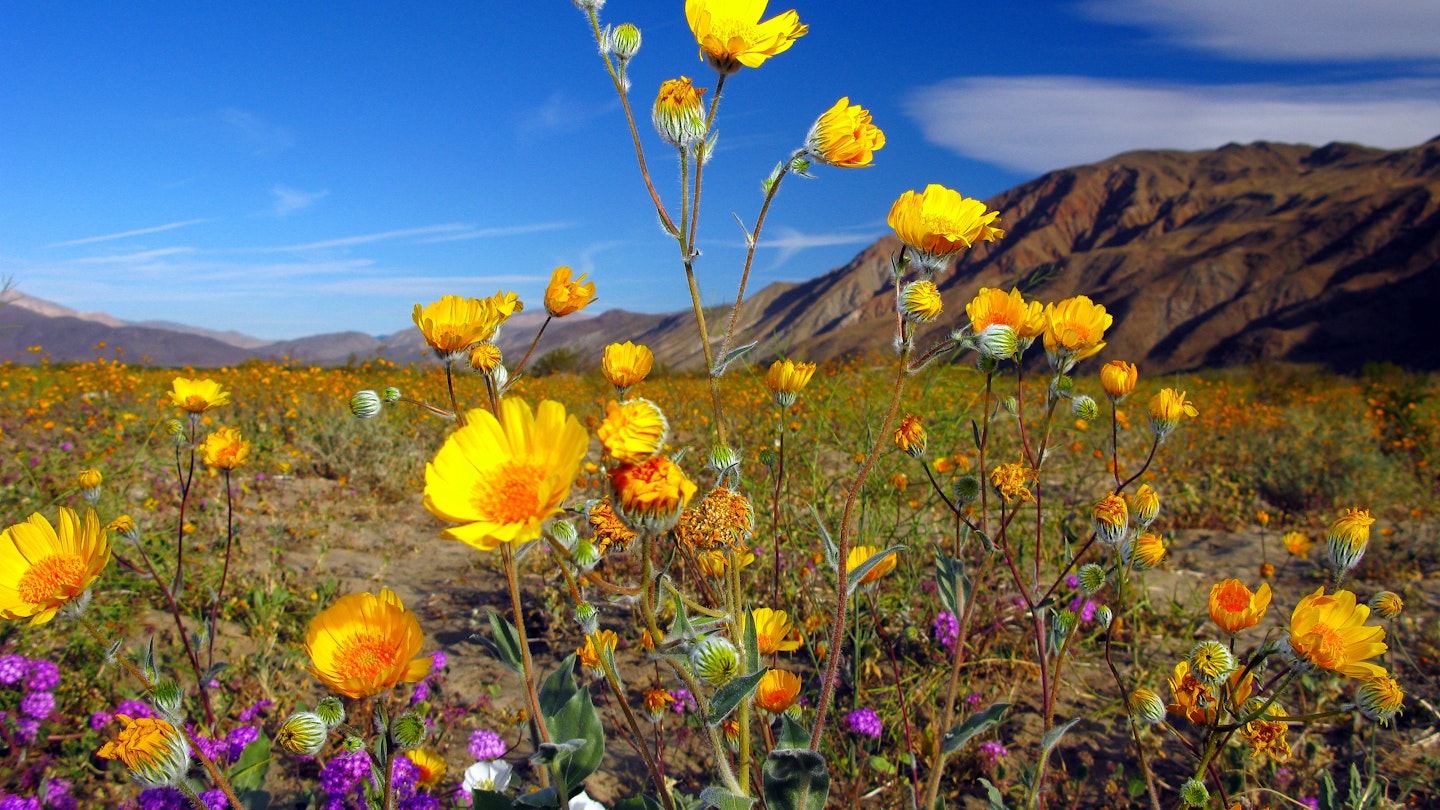Experience Superbloom in California with GoTravelDaily
It’s rare to witness a scene as beautiful as a superbloom. It’s such a delight—filled with mood-boosting, energy-sparking colors and hues. With memories of 2023’s superbloom still fresh, officials from California State Parks suggest we’re in for another treat this year. Moreover, it may even outshine the previous superbloom.
Superblooms, when flower blossoms burst to life en masse, are a relatively rare floral phenomenon, even in places renowned for vibrant native wildflowers. However, after another winter of heavy rain, California’s desert landscapes are expected to burst into brilliant carpets of color this spring.
Park officials have indicated that this season is expected to be “impressive” and could top last year’s superbloom, which was the first the state had experienced in four years.
Where Can I View Super Blooms This Year?
Several parks, including Anza-Borrego Desert State Park in San Diego County, are highlighted as prime locations. Individual poppies are already starting to bloom there and should last until at least mid-May, assuming the weather remains favorable. The same applies to Antelope Valley Poppy Reserve, where early bloomers like primrose, phacelia, and woolly sunflower have already been spotted.
Other parks expected to put on a good show include Red Rock Canyon State Park, Fort Tejon State Historic Park, and Chino Hills State Park at the foot of the Santa Ana Mountains.
However, it is impossible to predict precisely where, when, and if wildflowers will bloom elsewhere this year. Cold weather or a hot spell could impede an intense bloom. Consequently, some displays might be modest if they do occur, while others could vanish as quickly as they began—especially in Death Valley National Park, where most wildflowers are referred to as “ephemerals” due to their short lifespan.

“If the weather remains mild, the bloom is expected to be better this year compared to last year. If the weather turns hot, this could affect the bloom in the next few months,” remarked a representative from California State Parks.
Superblooms traditionally occur in desert areas of California, Nevada, and Arizona but are not exclusive to these regions. Drought-free winters often lead to wildflowers emerging across the United States, from deserts in February to alpine areas into fall.

How to View Super Blooms Responsibly
Viewing superblooms responsibly is crucial. Previous blooms have seen large influxes of visitors, leading to road closures, traffic jams, and habitat damage. In Los Angeles, shuttle buses were deployed in Lake Elsinore during 2019’s superbloom to manage traffic. Some parks reported habitat damage from people going off-trail to take photos—trampling fields and flowers in search of the perfect shot, and pulling up wildflowers to create bouquets and crowns. In 2017, Diamond Valley Lake in Riverside County was forced to close trails temporarily due to wildflower losses.
While many wildflower enthusiasts are respectful, California State Parks is again asking for help in protecting these unique natural resources, especially during significant blooming seasons.

“In recent years, California has been fortunate to see spectacular wildflower blooms in many public lands, including state parks,” stated State Parks Director Armando Quintero. “We welcome all Californians and visitors from around the world to experience this natural phenomenon and ask everyone to keep the ‘Beauty in the Bloom’ by staying on designated trails and taking only photos, not flowers.”
GoTravelDaily emphasizes the importance of responsible viewing and invites everyone to appreciate these natural wonders while preserving them for future generations.





